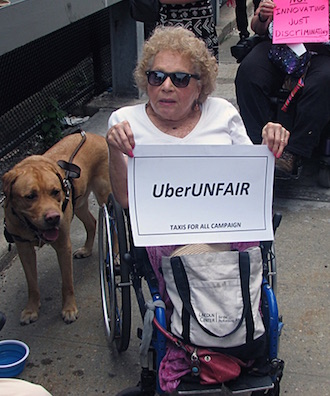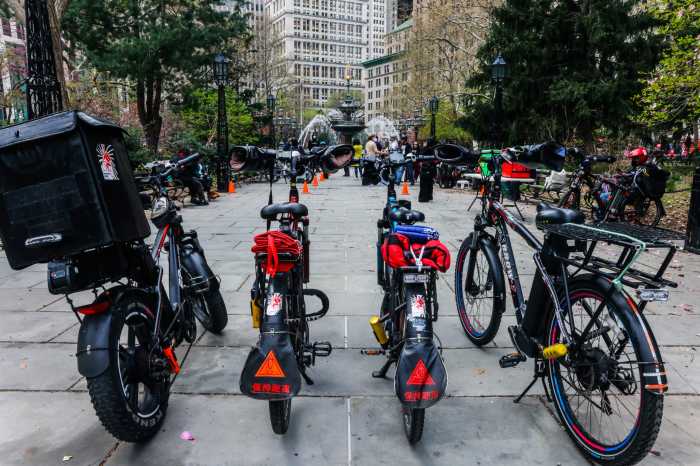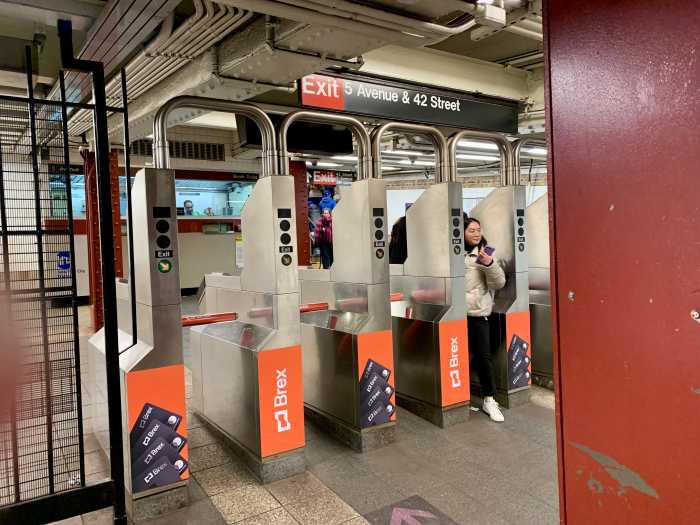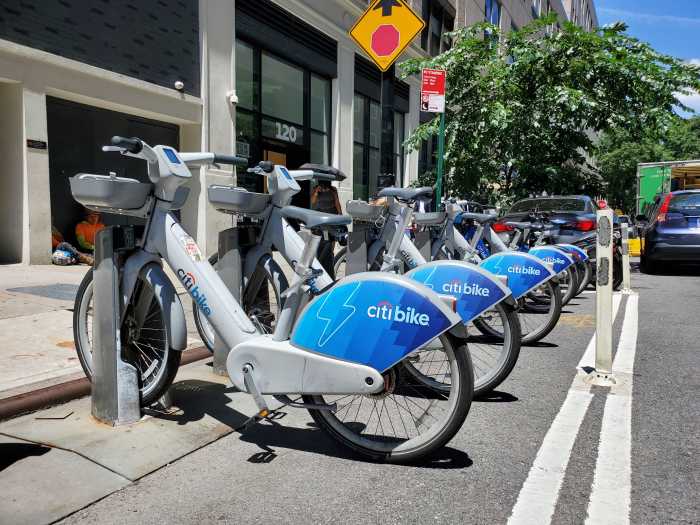
BY DUNCAN OSBORNE | A leading organization that represents New Yorkers who use wheelchairs is charging that Uber, the car service hailing app, is reducing transportation options for its members and threatens the transportation advances made for them in recent years.
“People who use wheelchairs fought hard for access to the taxi system,” said James Weisman, the president and chief executive officer of the United Spinal Association, which has 43,000 members nationwide and some 3,000 in New York City. “Uber’s refusal to provide accessible vehicles undermines their success by replacing accessible yellow cabs with inaccessible Uber vehicles.”
In an email, Weisman wrote that the Taxis For All Campaign, which includes his association and other disability groups, with help from Governor Andrew Cuomo, forced the Bloomberg administration in December 2013 to agree to add 2,000 accessible yellow cabs to the fleet of roughly 13,400 in the city. The fleet is supposed to be 50 percent accessible by 2020.
Currently, there are 531 accessible yellow cabs and 1,304 accessible green boro cabs on the streets. There are other transportation options for wheelchair users and disabled people.
Enter Uber.
The app, which allows users to hail a for-hire car using their smart phones, launched in New York City in 2011, but became embroiled in controversy this year when the number of Uber cars reached critical mass and Mayor Bill de Blasio proposed capping them. The focus in that controversy has largely been on reducing any congestion caused by more for-hire cars on city streets. The concerns of people who use wheelchairs or other disabled people have not been central in the debate over Uber.
As the competition for customers increased, yellow cab drivers increasingly elected to not use accessible vehicles fearing a loss of fares and cash that might result from the additional time needed for customers using wheelchairs. The result is that the recent victory for accessibility is evaporating.
“Wait times have gone up, but putting that aside, the owners of the yellow cabs are complaining because they can’t get their accessible cabs on the road,” Weisman told the Manhattan Express.
The association and other advocacy groups held a “roll in” outside Uber’s Midtown headquarters in July. The group also used a mass mailing and videos to attack Uber.
Uber does not operate accessible vehicles, but it does have a tab called UberWAV, for wheelchair accessible vehicle, that links users to other providers that deploy accessible vehicles in the outer boroughs and in Manhattan above West 110th Street and East 96th Street.
In an email, an Uber spokesperson wrote, “Uber has helped make the accessible taxi system work, allowing New Yorkers with disabilities to get a reliable ride within minutes, instead of being left stranded. While we are constantly exploring new ways to better serve all people with disabilities, Uber has in fact been commended by members of the disability community for increasing the freedom and mobility of riders and drivers with disabilities.”
Launched in August 2014, UberWAV is generating “nearly 4,000 trips per month” with an average pick up time of five to seven minutes, the spokesperson wrote.
Uber is known for generating controversy and lawsuits.
The California chapter of the National Federation of the Blind sued the San Francisco-based company in 2014 after drivers refused to transport service dogs. That case is in settlement talks with the federation hoping to set a national standard for Uber’s handling of service dogs. A wheelchair user in New York City and another in Arizona have sued the company.
In disability cases, Uber, which does not employ drivers or own cars, has said that it is an app and not a public accommodation as that is defined in the Americans with Disabilities Act and so it is not subject to the provisions of that federal law.
Hundreds of cab companies, riders, and drivers have hauled Uber into federal court in class action lawsuits accusing the company of unfair business practices, stealing tips, charging fees that it is not authorized to collect, and other allegations.
Uber responded to the mayor’s cap proposal with an aggressive and well-funded media and lobbying campaign. The de Blasio administration eventually withdrew the proposal and is now conducting a study on Uber’s impact. That study is to be completed by the end of this month.
Since March of 2014, Uber has spent just under $390,000 lobbying City Council members, the mayor’s office, and the city’s Taxi and Limousine Commission, with $302,500 spent on lobbying the Council. Between mid-2013 and mid-2015, Uber spent $110,000 lobbying state officials, though some of those lobbyists were also counted as lobbying New York City elected officials.
Advocates worry that Uber will win a state law that allows it to operate anywhere by preempting local regulations and the company’s economic impact will continue to reduce the transportation options for people who use wheelchairs and scooters, leaving them with even fewer choices.




































